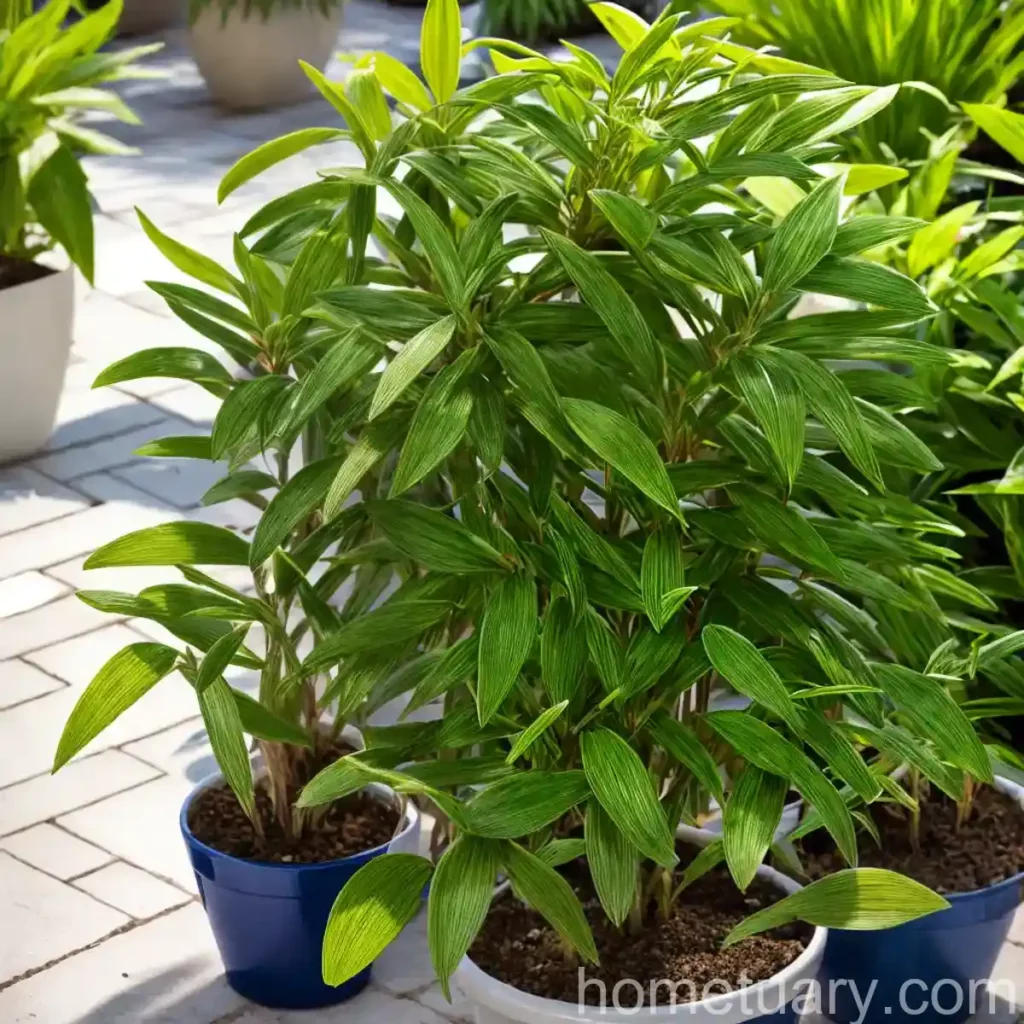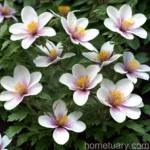Cardiandra (Cardiandra alternifolia): A Comprehensive Guide
Cardiandra alternifolia, commonly known as Cardiandra, is a fascinating plant that belongs to the Hydrangeaceae family. This versatile shrub is valued for its attractive foliage, delicate flowers, and adaptability to various growing conditions. In this comprehensive guide, we will explore the description, care tips, characteristics, and various aspects of cultivating Cardiandra. Whether you are an avid gardener, a landscape designer, or a plant enthusiast, this guide aims to provide valuable insights into the world of Cardiandra.
Cardiandra alternifolia Description
Cardiandra alternifolia, also known by its common name Cardiandra, is a deciduous flowering shrub that is native to East Asia, particularly Japan and Korea. It is a member of the Hydrangeaceae family, which also includes hydrangeas and deutzias. Cardiandra is known for its elegant, arching branches and clusters of small, bell-shaped flowers that adorn the plant in spring.
Key Characteristics
Here are some key characteristics of Cardiandra alternifolia:
- Foliage: The foliage of Cardiandra alternifolia is a standout feature, with its distinct alternately arranged leaves. The leaves are often oval or lance-shaped, adding a unique texture to the plant.
- Flowers: In late spring to early summer, Cardiandra blooms with delicate, pendulous clusters of flowers. The flowers are typically white or pale pink, creating a mesmerizing display against the backdrop of the foliage.
- Growth Habit: Cardiandra alternifolia is a small to medium-sized shrub, typically reaching heights of 3 to 6 feet and spreading 4 to 8 feet wide. Its arching branches give it an elegant, cascading appearance, making it a captivating addition to any landscape.
Cardiandra alternifolia Care Tips
Caring for Cardiandra alternifolia involves paying attention to its specific needs regarding water, sunlight, soil, and other essential elements. Here are some essential care tips to ensure the healthy growth and flourishing of Cardiandra in your garden or landscape:
Water
- Establishment Period: During the establishment period, maintain even soil moisture to help the plant develop a robust root system.
- Regular Watering: Once established, Cardiandra performs best with regular watering, especially during dry spells. Ensure that the soil is consistently moist, but not waterlogged, to support healthy growth and flowering.
Sunlight
- Partial Shade: Cardiandra alternifolia thrives in partial shade, particularly in regions with hot summers. It benefits from receiving dappled sunlight or partial shade throughout the day to prevent leaf scorch and maintain vibrant foliage.
Fertilizer
- Balanced Fertilization: Apply a balanced, slow-release fertilizer in spring to provide essential nutrients for the growing season. Avoid excessive fertilization, as it can lead to lush foliage at the expense of flowering.
Soil
- Well-Drained Soil: Plant Cardiandra in moist, well-drained soil with a slightly acidic to neutral pH. Amending the soil with organic matter can enhance its structure and fertility, promoting healthy root development.
Pruning
- Pruning Timing: Prune Cardiandra alternifolia immediately after flowering to shape the plant and remove any dead or damaged branches. Avoid heavy pruning, as it can reduce the following year’s flower production.
Cardiandra alternifolia Growing Conditions
To ensure the successful cultivation of Cardiandra alternifolia, it is crucial to create an environment that meets its specific growing requirements. Here are the optimal conditions for growing Cardiandra in your garden or landscape:
Climate Suitability
Cardiandra alternifolia is well-suited to temperate climates, particularly those with mild summers and adequate rainfall. It can thrive in USDA hardiness zones 5 to 8, where it benefits from the moderate temperatures and consistent moisture levels.
Planting Guide
- Planting Time: The best time to plant Cardiandra alternifolia is in early spring or fall, allowing the plant to establish its roots before the onset of extreme weather conditions.
- Planting Depth: When planting Cardiandra, ensure that the root ball is level with the surrounding soil surface to promote proper root development and stability.
Propagation Methods
- Softwood Cuttings: Propagate Cardiandra alternifolia using softwood cuttings taken in early summer. Dip the cut ends in rooting hormone and place the cuttings in a well-draining rooting medium to encourage root formation.
- Division: Divide mature Cardiandra plants in early spring to create new specimens. Ensure that each division has an adequate root system and sufficient foliage to support its growth.
Cardiandra alternifolia Diseases and Pests
Like many plants, Cardiandra alternifolia is susceptible to certain diseases and pests that can affect its overall health and appearance. Being proactive in identifying and addressing these issues is essential for maintaining the vitality of Cardiandra in your garden or landscape:
Common Diseases
- Powdery Mildew: Cardiandra alternifolia may be prone to powdery mildew, especially in humid or poorly ventilated conditions. Look for white, powdery patches on the leaves and treat with fungicidal sprays if necessary.
Disease Diagnosis
- Symptom Identification: Keep a close eye on the foliage of Cardiandra for any signs of discoloration, wilting, or abnormal growth. Promptly diagnose and address any issues to prevent them from spreading or causing significant damage.
Common Pests
- Aphids: Aphids can occasionally feed on the tender shoots and foliage of Cardiandra, leading to distorted growth and the secretion of honeydew. Use insecticidal soaps or natural predators to control aphid populations.
Botanist’s Tips for Growing Cardiandra
To maximize the beauty and health of Cardiandra alternifolia in your garden or landscape, consider the following expert tips from botanists and horticulturists:
- Mulching: Apply a layer of organic mulch around the base of Cardiandra to conserve soil moisture, suppress weed growth, and provide insulation against extreme temperatures.
- Companion Planting: Pair Cardiandra with complementary shade-loving plants, such as ferns, hostas, and astilbes, to create visually appealing and diverse plantings in shaded areas.
Fun Facts about Cardiandra alternifolia
Uncover some intriguing and lesser-known facts about Cardiandra alternifolia that showcase its unique characteristics and attributes:
- Wildlife Habitat: Cardiandra alternifolia attracts pollinators such as bees and butterflies with its nectar-rich flowers, contributing to the biodiversity of the surrounding ecosystem.
- Ornamental Value: Beyond its ecological benefits, Cardiandra serves as an enchanting ornamental plant, adding elegance and allure to shaded gardens, woodland settings, and mixed borders.
Links to External Resources
Explore the following links for additional information on Cardiandra alternifolia:
- Royal Horticultural Society – Cardiandra alternifolia
- Missouri Botanical Garden – Cardiandra alternifolia
Conclusion
In conclusion, Cardiandra alternifolia, with its graceful form, delightful flowers, and adaptable nature, is a captivating addition to gardens, landscapes, and naturalistic plantings. By understanding its specific care requirements, growing conditions, and potential challenges, enthusiasts can cultivate and enjoy the beauty of Cardiandra in diverse settings. Whether used as a focal point in shaded gardens or incorporated into woodland landscapes, Cardiandra remains a charming and valuable addition to horticultural and ecological spaces.
As a plant scientist, it is a pleasure to delve into the intricacies of plants like Cardiandra alternifolia and unravel their unique characteristics, ecological significance, and cultivation nuances. Through ongoing research, education, and appreciation for plants, we can continue to enhance our understanding and stewardship of the diverse plant species that enrich our world.















